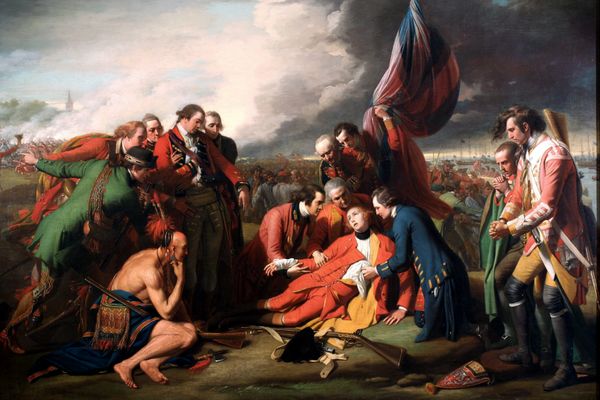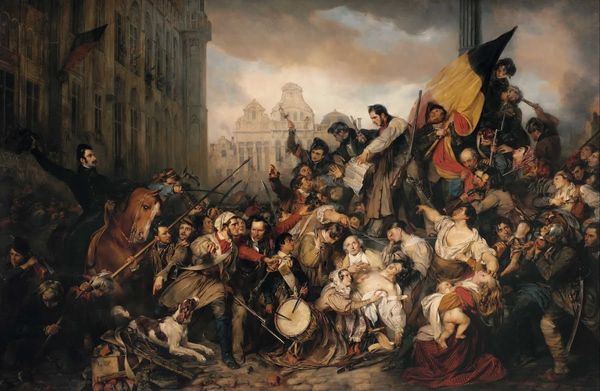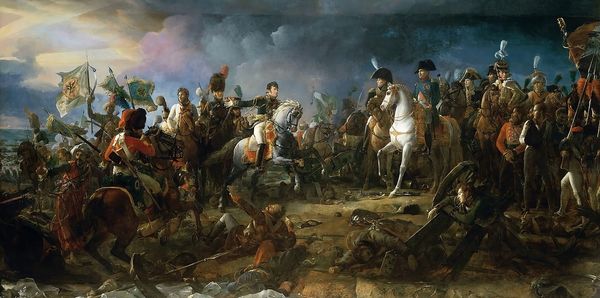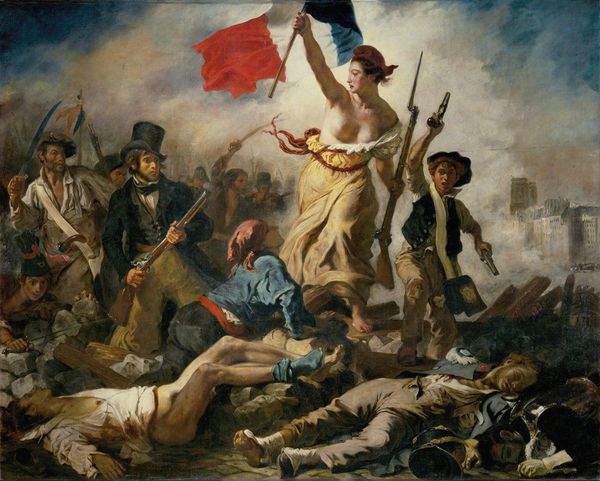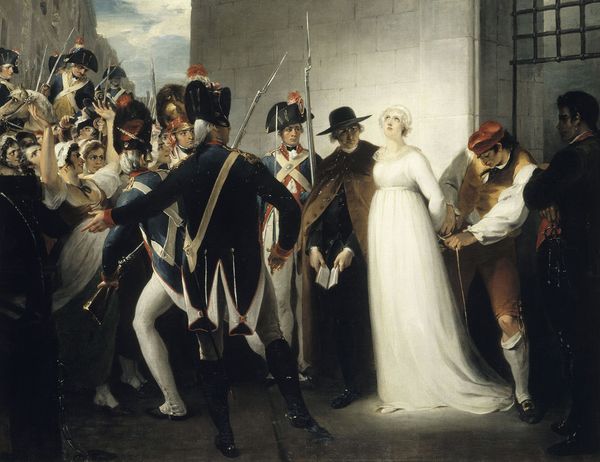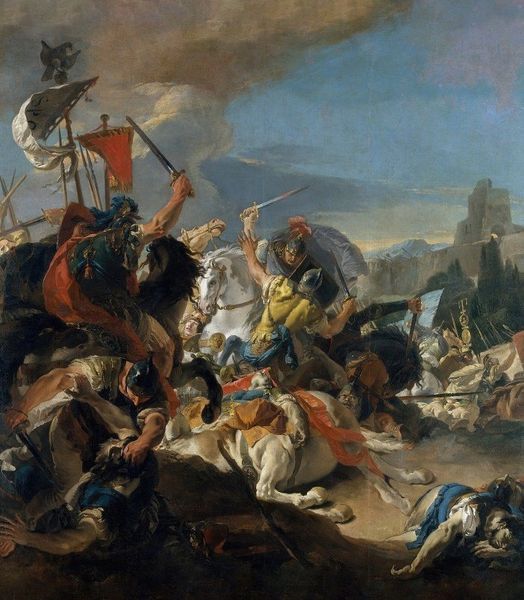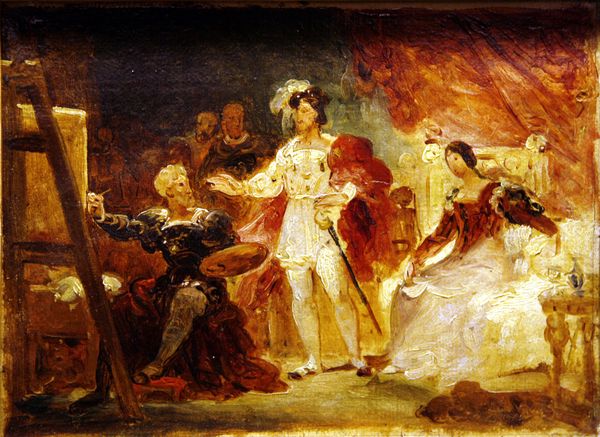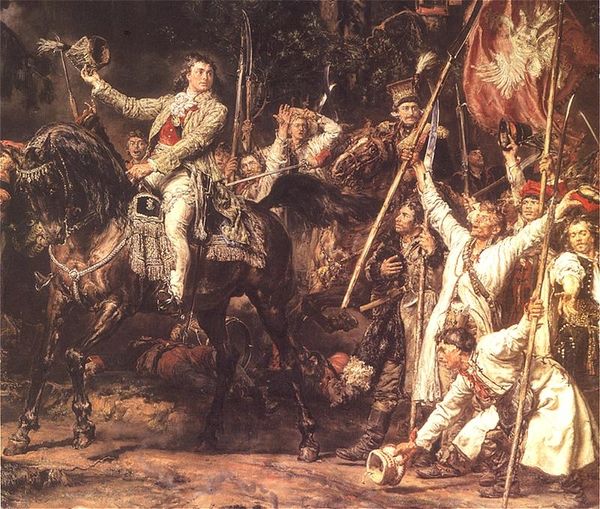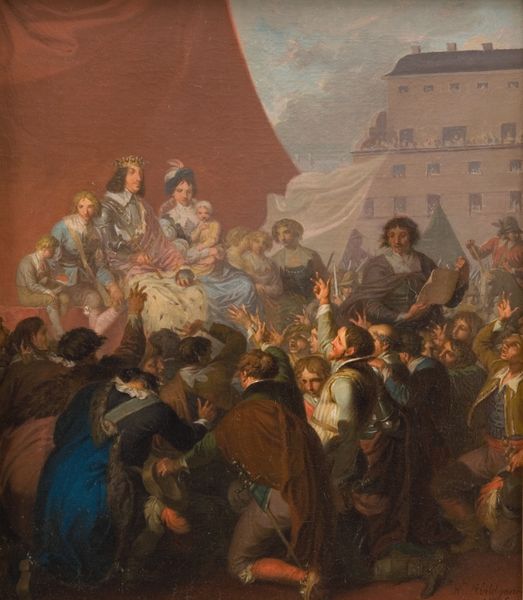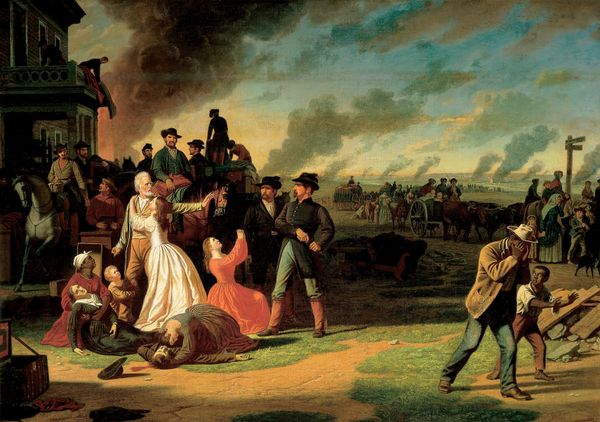
painting, oil-paint
#
portrait
#
narrative-art
#
painting
#
oil-paint
#
painted
#
figuration
#
oil painting
#
romanticism
#
history-painting
Copyright: Public domain
Curator: Antoine-Jean Gros's painting, "Embarkation of Madame D'Angoulême," completed in 1819, offers a glimpse into a pivotal moment of French history, laden with complexities of power, exile, and restoration. Editor: It's quite a stirring composition, wouldn't you agree? There is a palpable sense of motion created by the multitude of figures surrounding a central woman dressed in a gown of understated opulence, stepping forward, almost reluctantly. Curator: Indeed. Gros masterfully depicts Madame D'Angoulême, the daughter of Louis XVI and Marie Antoinette, as she embarks on her journey into exile during the turbulent period following the French Revolution. We need to remember how traumatic the execution of her parents was, and the lasting implications of it. Editor: The somber colors and crowded figures create a visually compelling scene, a swirl of individuals expressing a multitude of feelings. Tell me more about the role of staging and the symbolic charge of gestures within this carefully constructed moment. Curator: Every figure seems strategically positioned to highlight the complex web of emotions. The painting prompts crucial questions about the legitimization of power, about memory, and about national identity following seismic socio-political upheaval. Also, considering its place within Romanticism, the painting’s function could be linked with its ability to make its viewers viscerally experience history. Editor: Do you think Gros manages to create a genuine impression of Romantic heroism? What I'm noticing here is the artist’s particular employment of light: the central area around Madame D’Angoulême seems to be the brightest, although the stormy sky seems to suggest something completely opposite, like lurking, and unavoidable misfortune. Curator: This artistic choice, with the darker overtones that you note, does invite us to engage in critical historical investigation and think about individual perspectives of people in moments of turmoil. Is she a tragic heroine, or a symbol of a collapsing aristocracy? And what does it tell us about France after the Revolution? Editor: For me, the beauty of this work comes precisely from its skillful pictorial orchestration and ambiguous tonality that seems to simultaneously point to something glorious but ominous, and makes the scene itself even more evocative and emotionally charged. Curator: It encourages reflection about the human cost of revolution, viewed through a perspective tinted with the agenda of the Restoration era, of course, that offers us space to negotiate different ideas of France.
Comments
No comments
Be the first to comment and join the conversation on the ultimate creative platform.

